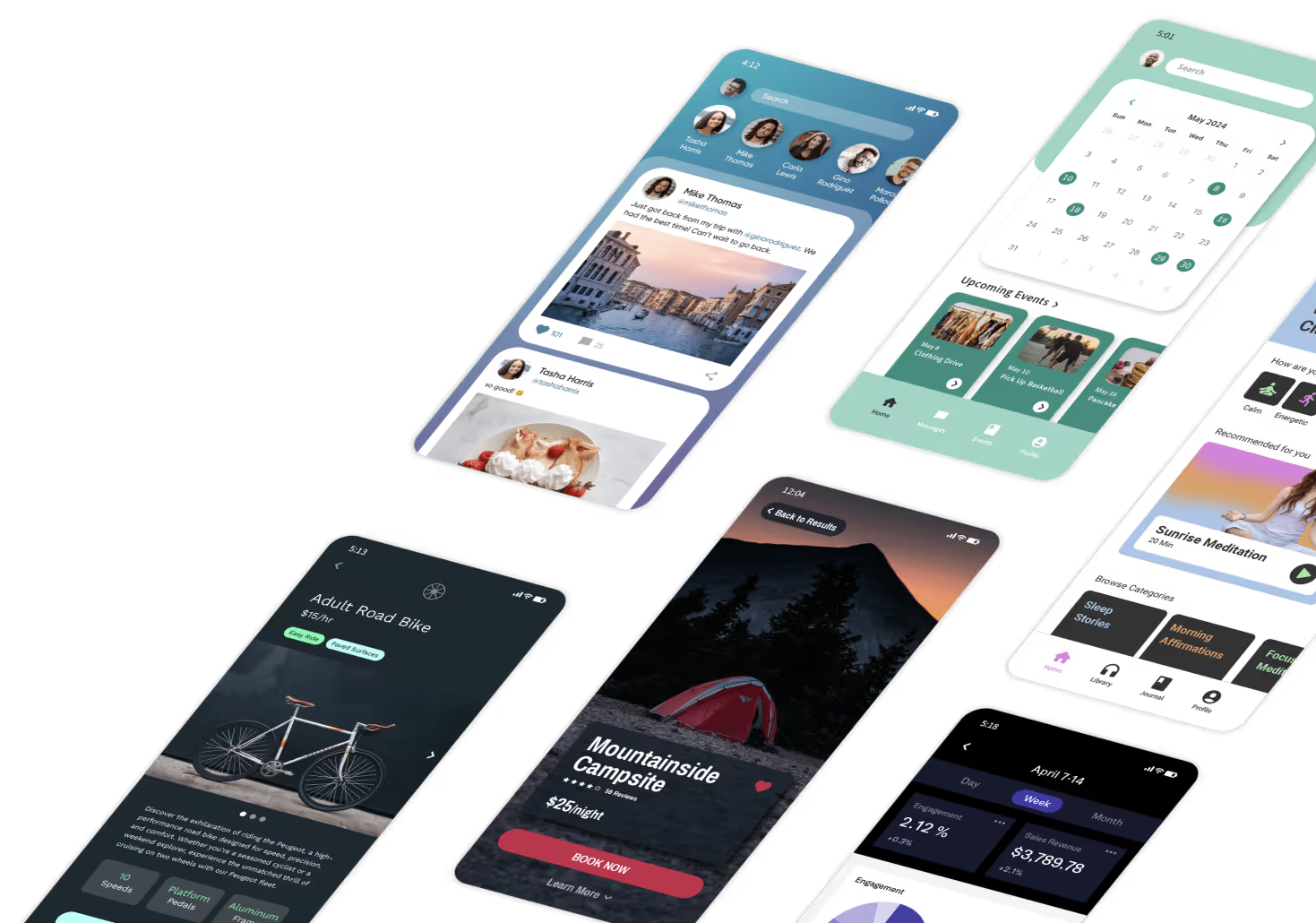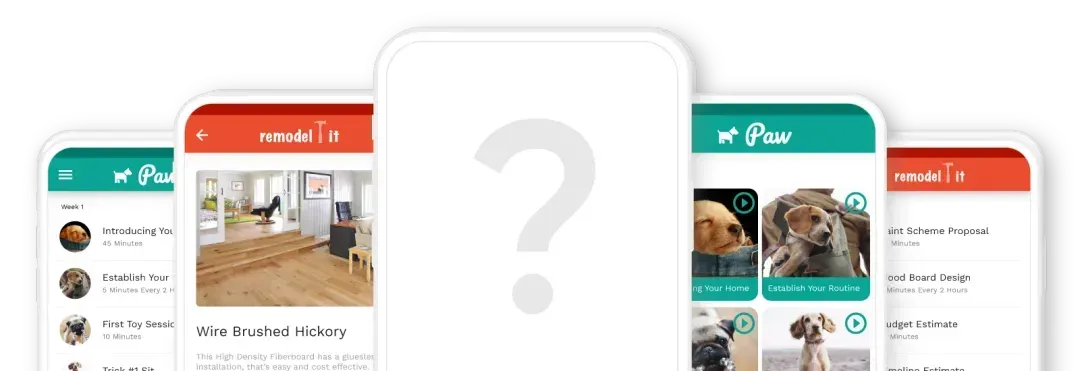We’ve all been in a brainstorming meeting where a few people throw out ideas for the solution to a problem. While this is better than doing nothing, these meetings are tough. Often, it’s hard for us to come us with new ideas on the spot (that don’t suck). Not to fear! This is the second part of our take on some better brainstorming techniques. Part 1 goes over 4 new ways to help you and your team generate new ideas, and this second part has four more (because you can never have enough ways to generate new ideas).

Questions Only

What if there were a way to play a game where you could come up with tons of ideas? How long would it last? Who would participate? Would it be like a board game? Would there be talking involved or should we all be silent act out our ideas? Why do we even need to come up with new ideas in the first place? How will we evaluate the good ideas? When will we know when the game of generating ideas is over? ... See what we’re doing here? ... Like the classic game on the improv series Whose Line Is It Anyway, this technique encourages participants to speak only in questions. Of course, we don’t just mean random, non sequitur questions. These questions should be all about the people you’re trying to help. Why do they have this problem? Why hasn’t it been addressed before? What could go wrong? What if they tried something different? There are an infinite number of questions you could come up with, but for the sake of expediency, we suggest you shoot for somewhere in the 50-200 range. Ok, so why are questions helpful in generating ideas? Well, our brain is hardwired to respond to questions. We find them engaging, and our default reaction is to try to answer them. So by asking many explicit questions about your design problem, you encourage the automatic system in your brain to begin thinking up answers that could lead to some pretty great ideas. Research has shown time and again that posing questions is extremely effective at generating problem-solving ideas.
Copy Hat

Ok, here’s where we need to bring up the obligatory Picasso quote on design: “Good artists copy; great artists steal.” So one of the greatest artists of all time is pretty much giving everyone license to copy other people’s work, right? Well, not quite. You see, what Picasso meant by “steal” is actually taking the inkling of an idea from another person and then transforming it in a new way so that people recognize you as the owner of your work and not just rehashing the same tired idea as someone else. So how do we apply this in the world of innovation? We put on different hats — figuratively, of course. By this, we mean pretend you're someone else trying to solve this problem. How would that person do it?
Whose hats do you try on? Well, there’s really no limit to what you can try, but we can offer some suggestions here. Two types of hats to try are organizational hats and personal hats. So, for example, an organizational hat might be Google. You’d put your best Google hat on and ask yourself, “how would Google think about this problem?” For a personal hat, you might ask yourself, “how would FDR solve this problem?” We definitely recommend starting with the people and organizations you admire. These could be famous and well-known like the examples we just mentioned, or they might be people in your life, like a mentor or close relative. Once you’ve tried on a couple hats and have some interesting ideas, the next step is to take that idea from copying to stealing, er, transforming. To really make that idea your own, you need to put your own hat back on, and ask yourself how you and your organization would implement the ideas in question. Think about how your purpose, personality, principles, and practices are different than the other hats you were wearing. How would those differences manifest themselves in these ideas?
Zoom

This technique is a two for one. Not only does it help alleviate a common problem in most brainstorming meetings, but it also helps you generate new ideas. The problem: Most brainstorming meetings are framed around one level of the problem. For example, let’s say that you’re a teacher and you and your fellow co-workers are trying to come up with new ways to get more kids involved in your after school robotics program. Once this problem has been framed like this everyone is trying to think of solutions at the overall robotics problem level - like changing the day or getting a new parent to run the program. But there is a higher level - should we even have an after school robotics program? Should we instead try to figure out what other after school activities our students would like to do? And then there’s also a smaller level - coming up with ways to improve specific details of the last project they did. Maybe if you could just figure out how to improve the last project that wasn’t great more kids would want to join. This is the issue with framing the problem at one level of the problem; we never think about the other levels at all.
The solution: In this technique, every five minutes, you alternate your focus from the large picture of your problem to a very minute detail. By forcing yourself to intensely focus on the problem and then switch points of view, you create the opportunity to draw association between specific details and broad themes as well as come up with new ideas to fix different levels of the problem. One profession that does this really well is architects. Designing a building takes a lot of work and because of this architects are quite adept at switching between scales. They’ll work on the big-picture activities like overall site planning or what the overall concept for the building is and then they’ll switch to the detailed like drawing specific sections or picking out materials. They’ll even work on the scale in between those two - like drawing out the overall plan of the building or working on the elevation. This switching of contexts cross-pollinates thoughts between them, increasing the odds that you will come up with a novel idea.
Magic Glasses

So this is probably the technique that takes the most time. First, you’ll need to acquire a pair of magic glasses...Ok, you got us; they’re not literal glasses. This is going to require some imagination on your part. The way this exercise works is that you go about your normal day (or, even better, your week), from work to home to everything in between — all your normal chores, fun, friends, and family. We can hear you now, “Just live my life like normal? No problem!” Ok, so there’s a little bit more to it than that. After all, this does have something to do with coming up with new ideas. As you go about your normal day, pretend you have these magic glasses on that no one else can see but let you view the world through the lens of your innovation problem. In practice, what you’re doing is keeping your problem top of mind even when you’re doing the mundane activities of your everyday life like washing the dishes or brushing your teeth. These activities are likely unrelated to your problem for the most part, but that’s exactly why they have such potential to form novel combinations and help you come up with great new ideas. In fact, it was these very same magic glasses that Archimedes was wearing when he made the connection between taking a bath and verifying the gold in the King’s crown.
An Idea Machine
These eight techniques are all designed to help your brain understand your innovation problem and how to overcome it by making new associations. These associations are at the heart of ideation and coming up with something truly novel. Coming up with ideas from scratch is intimidating. But the good news is that that’s not where ideas come from. They come for your experiences and by combining concepts in novel ways. Use these eight ideation technique of Analogous Rex, Mix Master, Chart the Course, Headhunter, Questions Only, Copy Hat, Zoom, and Magic Glasses to turn your brain into an idea machine.












.png)
.png)

.png)